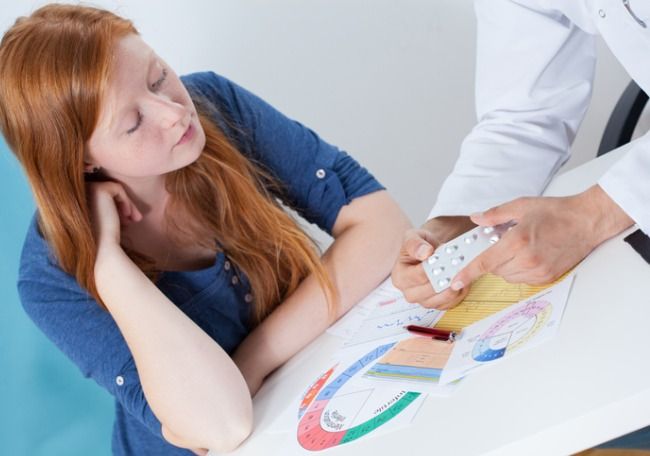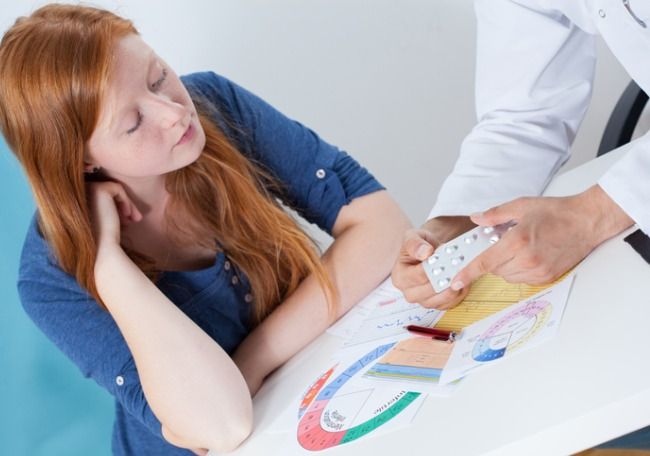Anticoncepción reversible de acción prolongada

1. Committee on Adolescence. Contraception for adolescents. Pediatrics. 2014;134(4). Available at:
www.pediatrics.org/cgi/content/full/134/4/e1244
2. Committee on Practice Bulletins-Gynecology, Long-Acting Reversible Contraception Work Group. Practice Bulletin No. 186: long-acting reversible contraception: implants and intrauterine devices. Obstet Gynecol. 2017;130(5):e251–e269
3. Committee on Adolescent Health Care Long-Acting Reversible Contraception Work Group. ACOG Committee Opinion No. 735: adolescents and long-acting reversible contraception: implants and intrauterine devices. Obstet Gynecol. 2018;131(5):e130–e139
4. Curtis KM, Tepper NK, Jatlaoui TC, et al. US medical eligibility criteria for contraceptive use, 2016. MMWR Recomm Rep. 2016;65(3):1–103
5. Bayer LL, Hillard PJA. Use of levonorgestrel intrauterine system for medical indications in adolescents. J Adolesc Health. 2013;52(suppl 4): S54–S58
6. Kantartzis KL, Sucato GS. Menstrual suppression in the adolescent. J Pediatr Adolesc Gynecol. 2013;26(3):132–137
7. Hubacher D, Grimes DA. Non contraceptive health benefits of intrauterine devices: a systematic
review. Obstet Gynecol Surv. 2002;57(2): 120–128
8. Lindberg L, Santelli J, Desai S. Understanding the decline in adolescent fertility in the United States, 2007–2012. J Adolesc Health. 2016; 59(5):577–583
9. Martinez GM, Abma JC. Sexual activity, contraceptive use, and childbearing of teenagers aged 15–19 in the United States. NCHS Data Brief. 2015; (209):1–8
10. Santelli JS, Lindberg LD, Finer LB, Singh S. Explaining recent declines in adolescent pregnancy in the United States: the contribution of abstinence and improved contraceptive use. Am J Public Health. 2007;97(1): 150–156
11. Parks C, Peipert JF. Eliminating health disparities in unintended pregnancy with long-acting reversible contraception (LARC). Am J Obstet Gynecol. 2016;214(6):681–688
12. Barrett M, Soon R, Whitaker AK, Takekawa S, Kaneshiro B. Awareness and knowledge of the intrauterine device in adolescents. J Pediatr Adolesc Gynecol. 2012;25(1):39–42
13. Kumar N, Brown JD. Access barriers to long-acting reversible contraceptives for adolescents. J Adolesc Health. 2016; 59(3):248–253
14. Teal SB, Romer SE. Awareness of long acting reversible contraception among teens and young adults. J Adolesc Health. 2013;52(suppl 4):S35–S39
15. Russo JA, Miller E, Gold MA. Myths and misconceptions about long-acting reversible contraception (LARC). J Adolesc Health. 2013;52(suppl 4): S14–S21
16. Potter J, Rubin SE, Sherman P. Fear of intrauterine contraception among adolescents in New York City. Contraception. 2014;89(5):446–450
17. Pritt NM, Norris AH, Berlan ED. Barriers and facilitators to adolescents’ use of long-acting reversible contraceptives. J Pediatr Adolesc Gynecol. 2017;30(1): 18–22
18. Murphy MK, Stoffel C, Nolan M, Haider S. Interdependent barriers to providing adolescents with long-acting reversible contraception: qualitative insights from providers. J Pediatr Adolesc Gynecol.
2016;29(5):436–442
19. Society for Adolescent Health and Medicine. Improving knowledge about, access to, and utilization of long-acting reversible contraception among adolescents and young adults. J Adolesc Health. 2017;60(4): 472–474
20. Mestad R, Secura G, Allsworth JE, Madden T, Zhao Q, Peipert JF. Acceptance of long-acting reversible contraceptive methods by adolescent participants in the Contraceptive CHOICE Project. Contraception. 2011; 84(5):493–498
21. Usinger KM, Gola SB, Weis M, Smaldone A. Intrauterine contraception continuation in adolescents and young women: a systematic review. J Pediatr Adolesc Gynecol. 2016;29(6):659–667
22. O'neil-Callahan M, Peipert JF, Zhao Q, Madden T, Secura G. Twenty-four-month continuation of reversible contraception. Obstet Gynecol. 2013; 122(5):1083–1091
23. American College of Obstetricians and Gynecologists’ Committee on Obstetric Practice. Committee Opinion No. 670: immediate postpartum long-acting reversible contraception. Obstet Gynecol. 2016;128(2):e32–e37
24. Curtis KM, Jatlaoui TC, Tepper NK, et al. US selected practice recommendations for contraceptive use, 2016. MMWR Recomm Rep. 2016;65(4):1–66
25. Vigl M, Kaemmerer M, Seifert-Klauss V, et al. Contraception in women with congenital heart disease. Am J Cardiol. 2010;106(9):1317–1321
26. Amies Oelschlager A-M, Micks EA, Debiec KE, Nizamic T, Mantrala MD, Prager SW. Long acting reversible contraception in adolescents with cardiovascular conditions. J Pediatr Adolesc Gynecol. 2014;27(6):353–355
27. Sufrin CB, Postlethwaite D, Armstrong MA, Merchant M, Wendt JM, Steinauer JE. Neisseria gonorrhea and Chlamydia trachomatis screening at intrauterine device insertion and pelvic inflammatory disease. Obstet Gynecol. 2012;120(6):1314–1321
28. Steiner RJ, Liddon N, Swartzendruber AL, Rasberry CN, Sales JM. Long-acting reversible contraception and condom use among female US high school students: implications for sexually transmitted infection prevention. JAMA Pediatr. 2016;170(5):428–434
29. Biggs MA, Arons A, Turner R, Brindis CD. Same-day LARC insertion attitudes and practices. Contraception. 2013;88(5): 629–635
30. Biggs MA, Harper CC, Brindis CD. California family planning health care providers’ challenges to same-day long acting reversible contraception provision. Obstet Gynecol. 2015;126(2): 338–345
31. Luchowski AT, Anderson BL, Power ML, Raglan GB, Espey E, Schulkin J. Obstetrician-gynecologists and contraception: long-acting reversible contraception practices and education. Contraception. 2014;89(6):578–583
32. Centers for Disease Control and Prevention. CDC contraceptive guidance for health care providers. US selected practice recommendations for contraceptive use, 2016: implants. Available at: https://www.cdc.gov/reproductivehealth/contraception/mmwr/spr/implants.html. Accessed September 24, 2019
33. Adeyemi-Fowode OA, Santos XM, Dietrich JE, Srivaths L. Levonorgestrel releasing intrauterine device use in female adolescents with heavy menstrual bleeding and bleeding disorders: single institution review. J Pediatr Adolesc Gynecol. 2017;30(4): 479–483
34. Quint EH, O’Brien RF; Committee on Adolescence; North American Society for Pediatric and Adolescent Gynecology. Menstrual management for adolescents with disabilities. Pediatrics. 2016;137(4):e21060295
35. Rivera Drew JA. Hysterectomy and disability among US women. Perspect Sex Reprod Health. 2013; 45(3):157–163
36. Albanese A, Hopper NW. Suppression of menstruation in adolescents with severe learning disabilities. Arch Dis Child. 2007;92(7):629–632
37. Savasi I, Jayasinghe K, Moore P, Jayasinghe Y, Grover SR. Complication rates associated with levonorgestrel intrauterine system use in adolescents with developmental disabilities. J Pediatr Adolesc Gynecol. 2014;27(1): 25–28
Comentarios
Para ver los comentarios de sus colegas o para expresar su opinión debe ingresar con su cuenta de IntraMed.







